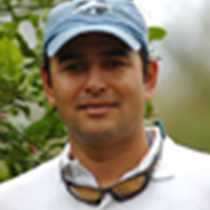Northern Isabela & Fernandina Island
We have been moving all night long to reach the youngest side of the Galápagos. This morning we all enjoyed a lot the impressive geological features that surrounded us here at the most-western side of the archipelago. Therefore, the oldest islands will lie to the east and that is why some volcanic activity has resumed nowadays mainly at the western side, precisely by Isabela and Fernandina Islands. During our morning Zodiac ride we witnessed the power of nature; few small vents on the southern flank of Ecuador volcano were steaming quite intensively for a while, and we were only a few hundred yards away from it! Later on, the journey continued with our ride along these rich shore line that gave us multiple sightings: marine iguanas, brown noddy terns, pelicans, penguins and flightless cormorants.
For our afternoon, we repositioned the National Geographic Islander to Fernandina Island. Here we headed out for a walk on a very young “pahoehoe” lava flow; this is a place where only pioneer species, such as mangroves and lava cactus, can survive. Our usual daily companions, the sea lions, were once again the starts of the afternoon. As hard as it is to believe, each one of them looks cuter than the other!
We have been moving all night long to reach the youngest side of the Galápagos. This morning we all enjoyed a lot the impressive geological features that surrounded us here at the most-western side of the archipelago. Therefore, the oldest islands will lie to the east and that is why some volcanic activity has resumed nowadays mainly at the western side, precisely by Isabela and Fernandina Islands. During our morning Zodiac ride we witnessed the power of nature; few small vents on the southern flank of Ecuador volcano were steaming quite intensively for a while, and we were only a few hundred yards away from it! Later on, the journey continued with our ride along these rich shore line that gave us multiple sightings: marine iguanas, brown noddy terns, pelicans, penguins and flightless cormorants.
For our afternoon, we repositioned the National Geographic Islander to Fernandina Island. Here we headed out for a walk on a very young “pahoehoe” lava flow; this is a place where only pioneer species, such as mangroves and lava cactus, can survive. Our usual daily companions, the sea lions, were once again the starts of the afternoon. As hard as it is to believe, each one of them looks cuter than the other!




